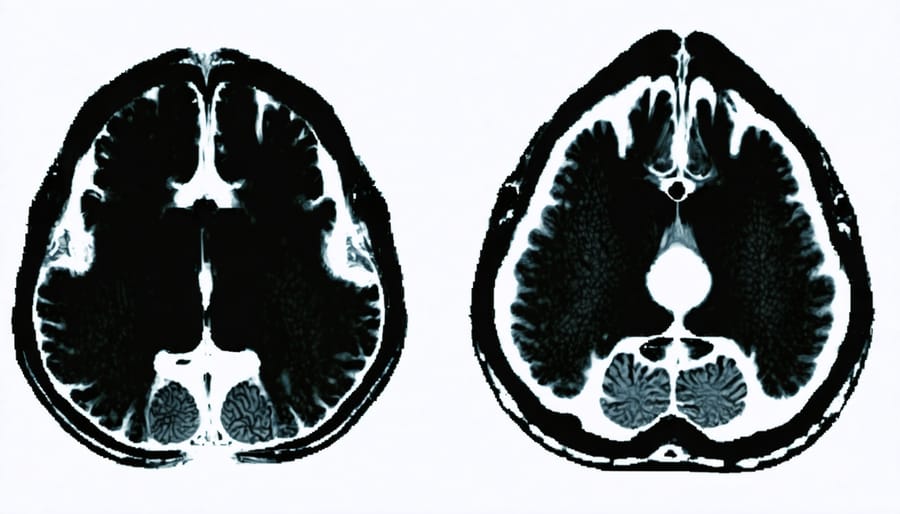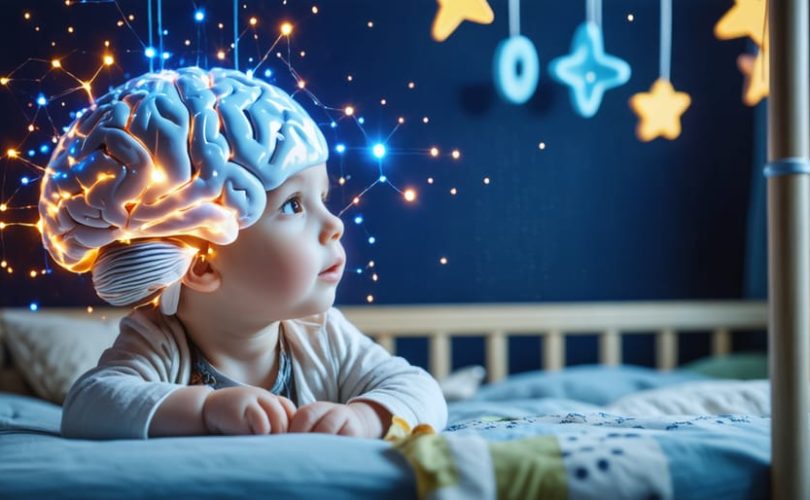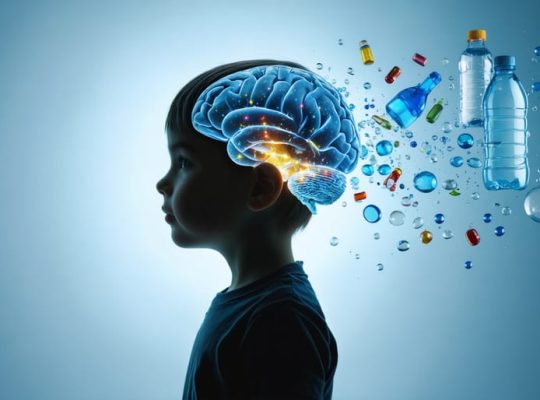During the critical early years of life, our brains undergo remarkable changes in brain development that shape how we perceive and interact with the world. Experience expectant plasticity represents one of nature’s most fascinating adaptive mechanisms – a process where our neural circuits actively await specific environmental inputs during key developmental windows. Like a photographer’s film awaiting exposure to light, a child’s developing visual system requires proper visual stimulation to form the neural connections essential for healthy sight.
Understanding this process is crucial for parents, educators, and healthcare providers, as it highlights why certain experiences during early childhood are non-negotiable for optimal development. From the way infants learn to recognize faces to how young children develop depth perception, these critical periods of brain plasticity set the foundation for lifelong visual capabilities.
By exploring real-world examples of experience expectant plasticity, we can better appreciate why providing rich, appropriate sensory experiences during childhood isn’t just beneficial – it’s essential for healthy neural development. This knowledge empowers us to create environments that support optimal brain development during these crucial early years.
The Visual System’s Critical Development Window
When Your Child’s Visual System Takes Shape
Your child’s visual system develops in fascinating stages during their early years. The journey begins even before birth, as babies can detect light through their mother’s abdomen during the third trimester. After birth, the first three months are crucial as infants start distinguishing faces, colors, and basic shapes.
Between 3-6 months, depth perception and color vision rapidly develop. This is when babies begin reaching for objects and showing preference for bright, contrasting colors. The 6-12 month period marks significant advancement in visual tracking and hand-eye coordination.
The most critical window for visual development occurs between birth and age two, but refinements continue until around age eight. During this time, both eyes must receive clear, balanced visual input to develop proper binocular vision and depth perception.
Dr. Sarah Chen, a pediatric ophthalmologist, explains: “Think of this period like building a house. The foundation must be solid, with both eyes working together. Any interruption during these critical periods can affect visual development long-term.”
This is why regular vision screenings are essential during your child’s early years, ensuring optimal visual development during these crucial periods.
Natural Visual Experiences That Matter Most
During critical developmental periods, certain visual experiences play a vital role in shaping a child’s brain. These experiences aren’t complex or extraordinary – they’re the simple, everyday visual interactions that we might take for granted. Face-to-face interactions with caregivers, exploring different colors and patterns, watching objects move at varying distances, and tracking moving items are all essential experiences that help wire the visual system.
Dr. Sarah Martinez, a pediatric neurologist, explains, “When babies look at their parents’ faces, follow a butterfly in the garden, or reach for a colorful toy, they’re not just being curious – they’re literally building their brain’s visual pathways.”
Natural light exposure, outdoor play, and exposure to different depths and distances in the environment are particularly important. Something as simple as a baby watching leaves moving in the wind or seeing shadows dance on a wall contributes to healthy visual development.
Parents should ensure their children have plenty of opportunities for these natural visual experiences, limiting screen time in favor of real-world visual exploration, especially during the first few years of life.
How Experience Shapes Visual Brain Development

Building Neural Connections Through Sight
From the moment a baby opens their eyes, their visual system begins a remarkable journey of development. During the first few months of life, visual experiences play a crucial role in child’s brain development, particularly in the occipital lobe where vision processing occurs.
Think of it like a photographer developing pictures in a darkroom. Each visual experience – from tracking a parent’s face to watching a mobile spin above the crib – helps create and strengthen neural connections. These connections form the foundation for how the brain processes visual information throughout life.
Dr. Sarah Chen, a pediatric neurologist, explains: “When babies look at high-contrast patterns or follow moving objects, they’re not just seeing – they’re building crucial neural pathways. This process is most active during the first six months of life, though it continues throughout childhood.”
Simple activities like peek-a-boo games, showing picture books, or allowing babies to observe different facial expressions all contribute to this vital development. Nature has designed our brains to expect and thrive on these visual experiences, making them essential for healthy visual processing and perception.
The Role of Environmental Stimulation
Early visual experiences play a crucial role in shaping how our brains develop and process information. Think of a baby’s brain like a sponge, eagerly absorbing everything it sees in its environment. When infants are exposed to varied visual stimuli – from watching leaves dance in the wind to observing facial expressions – their visual cortex actively forms and strengthens neural connections.
Dr. Sarah Chen, a developmental neuroscientist, explains, “The more diverse and enriching the visual environment during critical periods of development, the better equipped the brain becomes at processing and interpreting visual information.” This is why parents are often encouraged to create visually stimulating environments for their little ones.
Simple activities like showing high-contrast patterns, introducing different colors, or playing peek-a-boo can significantly impact visual development. Maria Thompson, a mother of two, shares, “I noticed my daughter became more engaged and alert when we started doing activities with colorful toys and picture books around three months of age.”
It’s important to note that this environmental stimulation should be natural and age-appropriate. Overwhelming a child with excessive visual stimuli can be counterproductive. The key is providing a balanced, nurturing environment that supports healthy visual development.

Supporting Healthy Visual Development

Age-Appropriate Visual Activities
Supporting your child’s visual development through age-appropriate activities is crucial during sensitive periods of brain development. Here are several engaging activities you can incorporate into your daily routine:
For Newborns (0-3 months):
– Hold high-contrast objects 8-12 inches from your baby’s face
– Slowly move simple patterns side to side
– Use black and white cards with basic shapes
– Make gentle eye contact during feeding times
For Infants (3-6 months):
– Play peek-a-boo games
– Introduce colorful mobiles
– Show picture books with clear, bold images
– Roll soft balls for tracking practice
For Babies (6-12 months):
– Hide and reveal favorite toys
– Practice pointing to objects in books
– Create simple obstacle courses
– Use finger puppets for visual engagement
For Toddlers (1-3 years):
– Sort objects by color and shape
– Play matching games
– Draw with large crayons
– Build with blocks
– Complete simple puzzles
Remember to:
– Follow your child’s lead and interest
– Keep sessions short and enjoyable
– Ensure good lighting
– Position activities at eye level
– Avoid screens during these activities
– Create a distraction-free environment
Dr. Sarah Chen, pediatric development specialist, notes: “These activities aren’t just fun – they’re building crucial neural pathways that will support your child’s visual processing abilities throughout life. The key is consistency and positive interaction.”
Warning Signs to Watch For
As a parent or caregiver, you play a crucial role in monitoring your child’s visual development. Being aware of potential warning signs can help ensure early intervention if needed. Here are key indicators to watch for during your child’s early developmental stages:
In infants and young toddlers, notice if your child:
– Doesn’t make eye contact by 3 months
– Shows no reaction to bright colors or moving objects
– Has difficulty tracking moving objects with their eyes
– Frequently tilts their head when looking at things
– Rubs their eyes excessively
– Shows unusual sensitivity to light
For preschool and school-age children, be attentive to:
– Sitting too close to screens or books
– Squinting or closing one eye to see better
– Complaining of headaches or eye strain
– Having trouble focusing on near or distant objects
– Showing poor hand-eye coordination
– Avoiding activities that require detailed visual attention
Dr. Sarah Chen, pediatric neurologist, explains: “The brain’s visual system is remarkably adaptable during early development, but this also means we need to catch and address any issues promptly. Parents shouldn’t hesitate to trust their instincts if something seems off.”
Remember that every child develops at their own pace, but if you notice any of these signs persisting, it’s important to consult with your pediatrician or an eye care specialist. Early detection and intervention can make a significant difference in your child’s visual development and overall learning experience.
The remarkable plasticity of our children’s brains during their early years highlights the critical importance of providing appropriate visual experiences and stimulation. As we’ve explored, early brain development is significantly shaped by visual input, making it essential for parents and caregivers to create enriching environments that support healthy visual development.
By understanding how experience-expectant plasticity works, we can take proactive steps to ensure our children receive the visual experiences they need during critical periods. Simple activities like face-to-face interaction, exposure to various patterns and colors, and outdoor play can make a meaningful difference in a child’s visual development.
Remember that every child develops at their own pace, but early intervention is key when concerns arise. If you notice any unusual patterns in your child’s visual behavior or development, don’t hesitate to consult with healthcare professionals. They can provide guidance and support tailored to your child’s specific needs.
Let’s embrace our role in supporting our children’s visual development by creating stimulating environments and maintaining regular check-ups. With attention and care during these crucial early years, we can help ensure our children develop strong visual processing skills that will serve them well throughout their lives.



